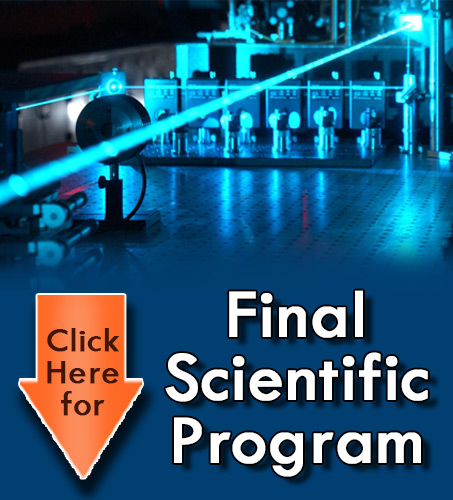
Albrecht Lindinger
Freie Universität Berlin, Germany
Title: Fluorescence anisotropy excitation by polarization-shaped laser pulses after transmission through a kagome fiber
Biography
Biography: Albrecht Lindinger
Abstract
Laser pulse shaping for control of photo-induced molecular processes has attained considerable success in recent years. It became most exciting when pulse shaper set-ups were employed to generate tailored pulses, which optimally drive the induced processes. Lately, polarization pulse shaping was explored to examine the vectorial character of the light fi eld. Novel pulse shaping schemes for simultaneous phase, amplitude and polarization control were designed and a parametric subpulse encoding was developed. Th ereby, the physically intuitive parameters like chirps and polarization states of subpulses can be controlled. Th is yields new perspectives of utilizing all properties of the light fi eld in the pulse modulation. Currently, pulse shaping methods are increasingly used to investigate biologically relevant systems. Th ereto, pulse shaping is applied to multi-photon excitated fl uorescence, which enables to exploit intrapulse interference eff ects. In this contribution improved fl uorescence contrast between dyes is reported by two-photon excitation with polarization shaped laser pulses behind a kagome fi ber utilizing the anisotropy of the dye molecules. Particularly phase and polarization tailored pulses were employed for two-photon excited fl uorescence of dyes in liquid behind the kagome fi ber. The distortions due to the optical fi ber properties were precompensated to receive predefi ned polarization shaped pulses at the distal end of the kagome fi ber. Th is enabled to optimally excite one dye in one polarization direction and simultaneously the other dye in the other polarization direction. Th e presented method has a high potential for endoscopic applications due to the unique properties of kagome fi bers for guiding ultrashort laser pulses.

